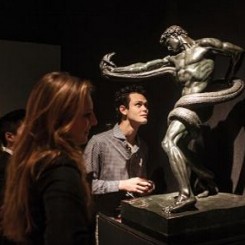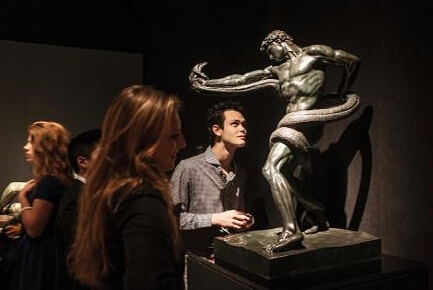[release]
Dates: Friday 27 November – Saturday 28 November
Time: 10am – 5pm
Address: Hong Kong Convention & Exhibition Centre, No.1 Expo Drive, Wanchai
Language: English
Course webpage: http://www.christies.edu/hong-kong/courses/collections-and-display.aspx
The first museums came into being in late 17th century England, a time of rapid progress in the natural sciences, maritime exploration, trade and missionary activity. Their primary role was to collect and catalogue objects from across the world. Over the last three centuries museum collections have evolved in complex ways. This two-day course will look at how the display of collections in both East and West has changed, examining the different approaches of private and public collections. It will provide an understanding of how displays of art profoundly affect the way we think about cultures.
This course is led by Derek Gillman, Chairman of Impressionist & Modern Art at Christie’s, with contributions from Doryun Chong, Chief Curator of M+, and Josh Yiu, Acting Director of The Art Museum, Chinese University of Hong Kong.
Topics to be discussed include:
Displays of Art in Imperial China (Josh Yiu)
This first session introduces various approaches to displaying art in China, and will be taught by Josh Yiu, Acting Director of The Art Museum, Chinese University of Hong Kong. During the imperial age, Chinese displays of art were located in temples, in aristocratic palaces, and in the houses of the gentry-class and merchants. Within each category, displays of art were influenced by taste and ideology, which of course change over time. Displays were created sometimes to underline a particular taste and oppose another, and sometimes just to imitate what was then widely valued. They were also affected by whether they were in the public or the private domain, a division which occurs in most cultures.
The Architectural Display of Art and Archaeology (Derek Gillman)
As with Chinese temples, European churches have traditionally displayed paintings and sculpture within elaborate settings, embracing worshippers within an atmosphere of awe. Christian images were framed by architectural elements derived from ancient Greece, elements which were also carried east to China as Buddhism moved along the Silk Road. Presenting European art within a classical framework spread from churches into royal palaces, then into the houses of wealthy collectors, and finally into museums. Only in the early 20th century was this architecturally complex method of displaying art finally challenged.
What are Displays of Collections Saying, and to Whom? (Derek Gillman)
When we consider how museums have presented their collections to visitors and scholars, we quickly see that institutions divide and categorize art (and archaeological and anthropological material) according to perceived status. This has been a practice since the beginning of museums, and their predecessors, the so-called ‘cabinet rooms’. Using paintings and photographs, in this session we look at the evolution of museum displays and exhibitions in Europe, America and China, from the 17th century onwards, in order to explore what they tell us about our attitudes to ourselves and to others.
Categories and Chronologies of Art in Western Institutions (Derek Gillman)
The Barnes Foundation in Philadelphia was built to house the extraordinary collection of one man, who formed the largest holding of Renoir and Cézanne paintings in the world. Understanding the Barnes Foundation is a good counterpoint to traditional western displays of art, precisely because Albert Barnes (1872-1951) was so hostile to the way that museums created hierarchies of culture. Barnes placed together works of art from different places and times in harmonious installations. His view was that only formal relationships were important to the appreciation of art, a view which was widely shared at the time by artists and avant-garde critics.
A Review of Recent Public and Private Museums and their Displays (Derek Gillman)
Many museums have been built or renovated during recent decades, and it is said that China is building more museums than any other country in the world. Here we examine some of the more celebrated examples, ranging from large public institutions to small private museums, to see how their displays harmonize with their stated missions. Are modern museum displays so different from traditional ones, and how far have we traveled in thinking creatively about the display of collections?
Collecting and Display Strategies of the new M+ Museum (Doryun Chong)
Doryun Chong, Chief Curator of M+ Hong Kong, will discuss the museum’s curatorial approach, the building of its collection, and the various display strategies.

